
Solomon also called Jedidiah, was a monarch of ancient Israel and the son and successor of King David, according to the Hebrew Bible or Old Testament. He is described as having been the penultimate ruler of an amalgamated Israel and Judah. The hypothesized dates of Solomon's reign are from 970 to 931 BCE. After his death, his son and successor Rehoboam would adopt a harsh policy towards the northern tribes, eventually leading to the splitting of the Israelites between the Kingdom of Israel in the north and the Kingdom of Judah in the south. Following the split, his patrilineal descendants ruled over Judah alone.

Sheba is an ancient kingdom mentioned in the Hebrew Bible and the Quran. It particularly features in the tradition of Orthodox Tewahedo in today's Yemen and is also asserted as the home of the Queen of Sheba, who is left unnamed in Jewish texts, but is known as Makeda in Ethiopian texts and as Bilqīs in Arabic texts. According to the Jewish historian Josephus, Sheba was the home of Princess Tharbis, who is said to have been the wife of Moses before he married Zipporah.

Menelik I was the legendary first Emperor of Ethiopia. According to Kebra Nagast, a 14th-century national epic, in the 10th century BC he is said to have inaugurated the Solomonic dynasty of Ethiopia, so named because Menelik I was the son of the biblical King Solomon of ancient Israel and of Makeda, the Queen of Sheba.
The Queen of Sheba is a figure first mentioned in the Hebrew Bible. In the original story, she brings a caravan of valuable gifts for the Israelite King Solomon. This account has undergone extensive Jewish, Islamic, Yemenite and Ethiopian elaborations, and it has become the subject of one of the most widespread and fertile cycles of legends in Asia and Africa.

The Grote Kerk or St.-Bavokerk is a Reformed Protestant church and former Catholic cathedral located on the central market square in the Dutch city of Haarlem. Another Haarlem church called the Cathedral of Saint Bavo now serves as the main cathedral for the Roman Catholic Diocese of Haarlem-Amsterdam.
Michiel Coxie the Elder, Michiel Coxcie the Elder or Michiel van Coxcie, Latinised name Coxius, was a Flemish painter of altarpieces and portraits, a draughtsman and a designer of stained-glass windows, tapestries and prints. He worked for patrons in the principal cities of Flanders. He became the court painter to successively Emperor Charles V and King Philip II of Spain.

The Royal Palace of Aranjuez is one of the official residences of the Spanish royal family. It is located in the town of Aranjuez (Madrid), Spain. Established in the 16th century as a royal hunting lodge, the palace was built by order of Philip II. Under his reign it became one of four seasonal seats of the court along Rascafría, El Escorial and the Royal Alcázar of Madrid. The royal estate comprises a set of landscaped and ornate gardens and woodlands that house an extensive botanical collection.
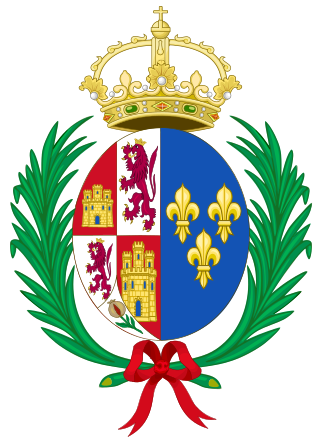
Elisabeth of France or Isabella of Bourbon was Queen of Spain from 1621 to her death and Queen of Portugal from 1621 to 1640, as the first spouse of King Philip IV & III. She served as regent of Spain during the Catalan Revolt in 1640–42 and 1643–44.
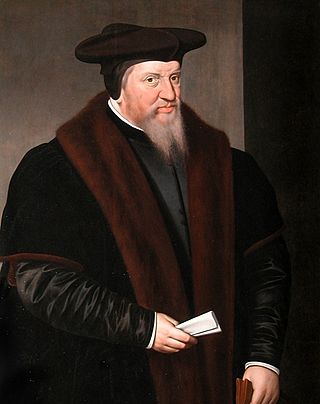
Viglius was the name taken by Wigle Aytta van Zwichem, a Dutch statesman and jurist, a Frisian by birth.
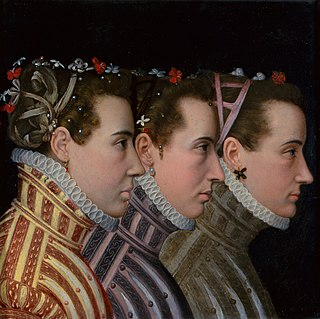
Lucas de Heere or Lucas d'Heere was a Flemish painter, watercolorist, print artist, biographer, playwright, poet and writer. His costume books and portraits are a valuable resource for 16th-century fashion.

Pieter Jansz. Pourbus was a Flemish Renaissance painter, draftsman, engineer and cartographer who was active in Bruges during the 16th century. He is known primarily for his religious and portrait paintings.

Frans Pourbus the Elder was a Flemish Renaissance painter who is known primarily for his portraits and religious compositions, as well as a few genre scenes. He was the son of the prominent Bruges painter and cartographer Pieter Pourbus and the father of Frans Pourbus the Younger who became an international portraitist of the European ruling class.

Solomon and Sheba is a 1959 American epic historical romance film directed by King Vidor, shot in Technirama, and distributed by United Artists. The film dramatizes events described in The Bible—the tenth chapter of First Kings and the ninth chapter of Second Chronicles.
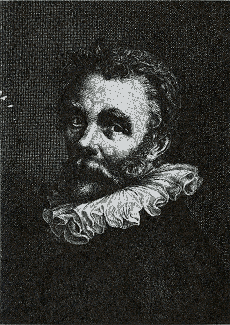
Cornelis or Cornelius Ketel was a Dutch Mannerist painter, active in Elizabethan London from 1573 to 1581, and in Amsterdam till his death. Ketel, known essentially as a portrait-painter, was also a poet and orator, and from 1595 a sculptor as well.
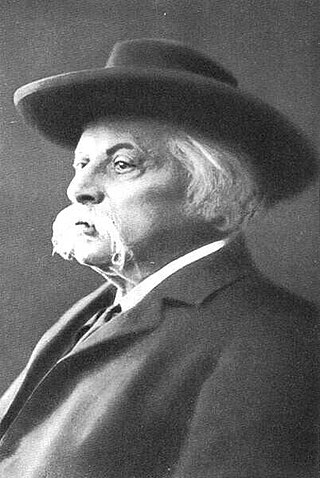
Die Königin von Saba is an opera in four acts by Karl Goldmark. The German libretto by Hermann Salomon Mosenthal sets a love triangle into the context of the Queen of Sheba's visit to the court of King Solomon, recorded in 1 Kings 10:1-13. The plot centres on a love triangle not found in the Bible between the Queen of Sheba, Assad, and Sulamith.
Philip II of Spain has inspired artistic and cultural works for over four centuries, as the most powerful ruler in the Europe of his day, and subsequently a central figure in the "Black Legend" of Spanish power. The following list covers representations of him in drama, opera, film, novels, and verse. A small selection of the many artistic portrayals of Philip is shown in gallery form.

The Queen of Sheba is a 1952 Italian adventure film directed by Pietro Francisci.

The Sint Janskerk in Gouda, the Netherlands, is a large Gothic church, known especially for its stained glass windows, for which it has been placed on the list of the top 100 Dutch monuments.

The Family of Philip V is an oil-on-canvas painting by the French artist Louis-Michel van Loo, completed in 1743. It features life-sized depictions of Philip V of Spain and his family. The painting depicts the royal family in a fictional room and is in the style of French baroque and rococo art. The painting is one of a trio of paintings which bear the same name and are dated 1723 by Jean Ranc, a smaller 1738 version and the 1743 rendition, which it's the most popular of the versions
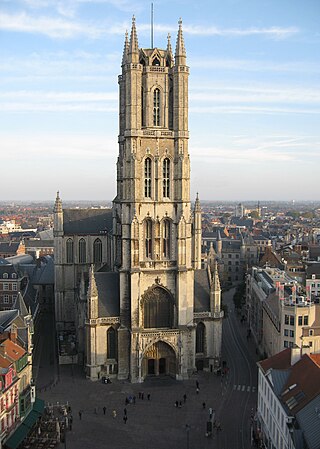
Saint Bavo's Cathedral, also known as Sint-Baafs Cathedral, is a cathedral of the Catholic Church in Ghent, Belgium. The 89-meter-tall Gothic building is the seat of the Diocese of Ghent and is named for Saint Bavo of Ghent. It contains the well-known Ghent Altarpiece.



















